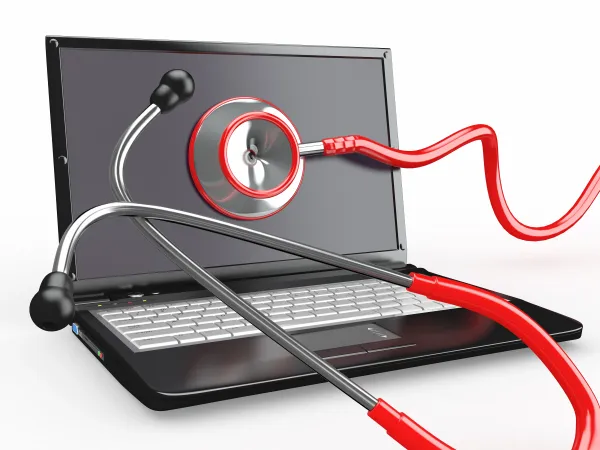OPPS Rule Comes with a $63 Billion Promise

Site neutral payment to hit provider-based departments
The much awaited 2017 update hospital Outpatient Prospective Payment System (OPPS) proposed rule has arrived. Are you ready to embrace the provisions of the 2015 Bipartisan Budget Act?
“Most providers I have spoken with are very worried about the proposed rule for 2017, particularly the lab packaging,” says Sarah Goodman, MBA, CHCAF, CPC-H, CCP, FCS, president of the consulting firm SLG, Inc., in Raleigh, N.C.
Read on for a rundown on the salient must-know points in the proposed rule, which comes with a 60-day comment period for changes as well.
Decipher the Payment Updates
According to the proposed OPPS update, CMS payments in 2017 will increase by 1.6 percent, and ASC payments would increase by 1.2 percent in 2017. The CMS arrived at a figure of 1.6 percent by compiling a positive 2.8 percent market basket update, a 0.5 percent cut towards productivity adjustment and a 0.75 percent cut under the Affordable Care Act.
This 1.6 percent payment increase translates to an estimated total payment amount of $63 billion, up $5.1 billion compared to 2016. As for ASCs, for those who meet quality reporting requirements under the Ambulatory Surgical Center Quality Reporting (ASCQR) program, a 1.2 percent raise would mean an estimated total payment amount of $4.4 billion, up $214 million compared to 2016, as per CMS.
Know How Site-Neutral Payment Provisions Impact You
As per Section 603 of the Bipartisan Budget of 2015, CMS proposed implementing the site-neutral payment provisions. This means that from Jan. 1, 2017, the payment for off-campus Provider Based Departments (PBD) that started billing under the OPPS on or after Nov. 2, 2015, would come from other applicable Medicare Part B payment systems—rather than OPPS. Most services provided in new off-campus PBDs in 2017, will be paid through the physician fee schedule.
This would impact current and future provider-based departments. However, OPPS would continue to cover emergency department services.
Good news: This is a temporary policy and would apply for one year only.
As for those off-campus departments that have been billing under the OPPS prior to Nov. 2, 2015, they need to be cautious. The nature of their service and even the billing address would need to stay the same as it was prior to Nov. 2, 2015, so as to enjoy exemption from these site-neutral payments.
The American Hospital Association (AHA) is skeptical about the turn of events. “The agency is actually proposing to provide no funding support for outpatient departments for the services they provide to patients,” said Tom Nickels, executive vice president of government relations and public policy at the AHA, in an interview with www.beckershospitalreview.com.
You Need Not Report Pain Management in VBP Program
CMS decided to remove the pain management dimension after receiving feedback that associating patient contentment with pain reducing measures to the Hospital Value-Based Purchasing (VBP) Program payment incentives does make the hospital staff more inclined to prescribe greater number of opioids, so that the patient can feel better subjectively.
Furthermore, CMS has also proposed eliminating the pain management variable from the 2018 Hospital Consumer Assessment of Healthcare Providers and Systems survey for the VBP program.
Look Forward to Seven New Measures for Your Outpatient Quality Reporting
CMS proposes the following seven new measures for the quality reporting program for outpatients in 2020:
The OAS CAHPS, a 37-component survey, intends to assess the patient experience regarding care they received during and following surgeries and other procedures in hospital outpatient departments and ASCs. This data would need to be submitted to CMS on a quarterly basis, starting with visits on Jan. 1, 2018.
Learn About These 25 New APCs
In an effort to restructure and formally define Ambulatory Payment Classifications (APCs), CMS has proposed a definition for C-APC as “a classification for the provision of a primary service or specific combination of services and all adjunctive services and supplies provided to support the delivery of the primary or specific combination of services.” This year, CMS is adding 25 more new C-APCs, making the total number as 62 as on January 2017.
In addition, there are proposals to initiate three new clinical families. This will categorize the new C-APCs that comprise biopsy, nerve procedures, incision, excision, airway endoscopy procedures and drainage procedures.
Expect a Cut in X-Ray Payments for Analog Systems
If you still work using film-based X-rays, the Consolidated Appropriations Act wants you to fall in line and adapt to digital imaging. Beginning 2017, the OPPS payment for film- based X-ray imaging services shall be 20 percent lesser.
A modifier to cut on your pay: CMS is proposing the development of a new modifier to be appended to X-ray services on the conventional X-ray claims. This modifier would help payers to deduct 20-percent from the payment for the X-ray services.
Furthermore, the diagnostic APC structure will no longer contain interventional radiology imaging studies and nuclear medicine from 2017 onwards. CMS wants a consolidation of 17 imaging APC’s in CY 2016 to 8 in CY 2017. This restructuring is intended to align radiology along with diagnostic imaging family. Also, this will categorize them to be more clinically similar.
Enjoy a Shorter 90-Days Reporting Period for EHR Incentive Program
To offer greater flexibility and convenience to the providers in the Meaningful Use (MU) reporting of EHRs, as urged by AHA, CMS now proposes to shorten the 2016 reporting period to 90 days (form a complete year) for all hospitals and physicians that have been previous participants in the MU program. This is supposed to ease out the administrative burden on surgeons.
The 2017 OPPS proposed rule also includes the proposed elimination of modifier L1, expanded packaging policies, and aligning the packaging to be more claims-based. There are new codes, deleted codes, and new separately payable APC services.
Use the Comment Period to Your Advantage
CMS will accept comments on the proposed rule until Sept. 6. Do not miss this chance to voice your concerns, and get amendments done that help your facility.
Expert advice: “Since these are just proposed at the moment, it is a bit premature to suggest how to handle the changes,” says Goodman. “However, I would encourage hospitals and ASCs to read through the proposed rule and let their concerns be known during the comment period.”




